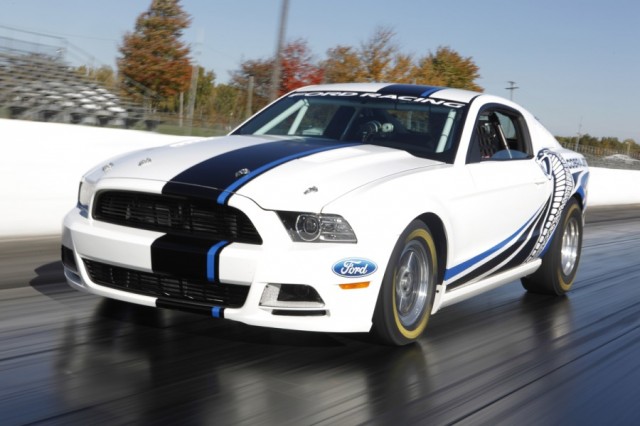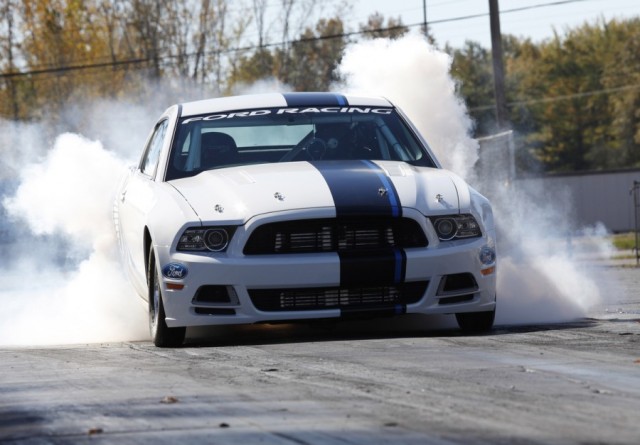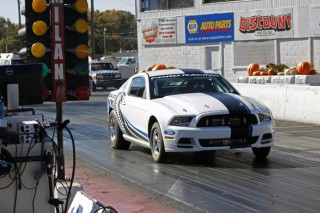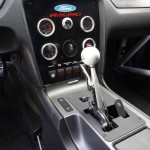Here’s the thing about superchargers. They sound awe inspiring and fantastic, provide instant power but draw a lot of power at high boost levels. Ford says the 2.9-liter blower used on the 2013 Cobra Jet uses as much as 100hp to drive the supercharger, 100 horses that can no longer work to propel the car ahead.
After finishing work on the the 3.5-liter EcoBoost V6 for the F-150, Turbocharger design and release engineer Dave Born joined the Cobra Jet team. “When done right, turbocharging is just as good as or better than supercharging,” Born says.
“Ford has embraced turbocharging technology and a lot of our production engineers are working with the technology on a daily basis, so we have a lot of knowledge,” says Rob Deneweth, Cobra Jet powertrain development engineer. “So we decided to apply that knowledge to the Mustang Cobra Jet to showcase what our engineers and suppliers know how to do.”
Turbochargers come with baggage. The baggage we know as ‘turbo lag’. Dave Born says they’ve used the smallest possible turbos that will help them achieve the required airflow. “We’ve also got some other enhancements to help improve the responsiveness; we have very low inertia and very low internal friction.” he added.
National Hot Rod Association competition rules for the stock classes require that parts like turbochargers to be derived from production components. Borg-Warner has supplied smaller, more efficient turbochargers based on the units used in the Focus ST. The turbine wheels are made from titanium aluminide to reduce the rotational inertia by 50 percent.
EcoBoost comes into play here with Cobra Jet using the same integrated, electronically controlled wastegates used on production EcoBoost engines. Not unlike the turbocharger of the 6.7-liter Power Stroke® diesel V8 in Ford’s Super Duty trucks, the shaft in the Cobra Jet turbocharger rides on low-friction ball bearings, enabling the compressors to spin up to 150,000 rpm almost instantly.
Born says the ‘rapid learning curve’ racing provides is the reason why car makers go racing. “We’re also evaluating materials like the titanium aluminide for the turbine, and it could find its way into future production programs as the costs come down.” he added.
The Twin Turbo Cobra Jet also wears the new Ford Racing livery, with the white body accented with an asymmetric black and blue stripe running over the top of the car from bumper to bumper. The Cobra Jet’s flanks blend an upward sweeping version of the stripe with the traditional striking cobra head executed in black with blue accents.









